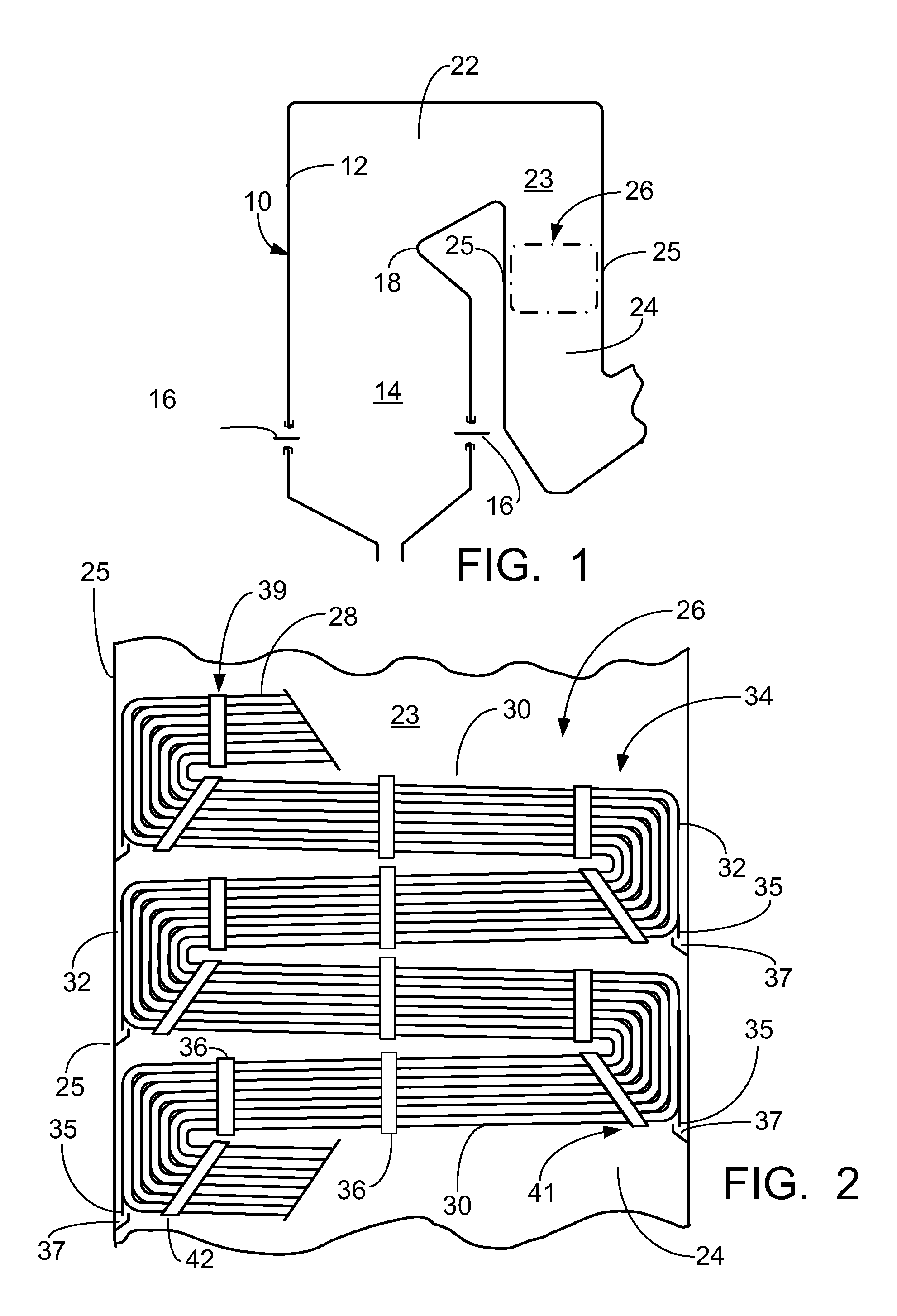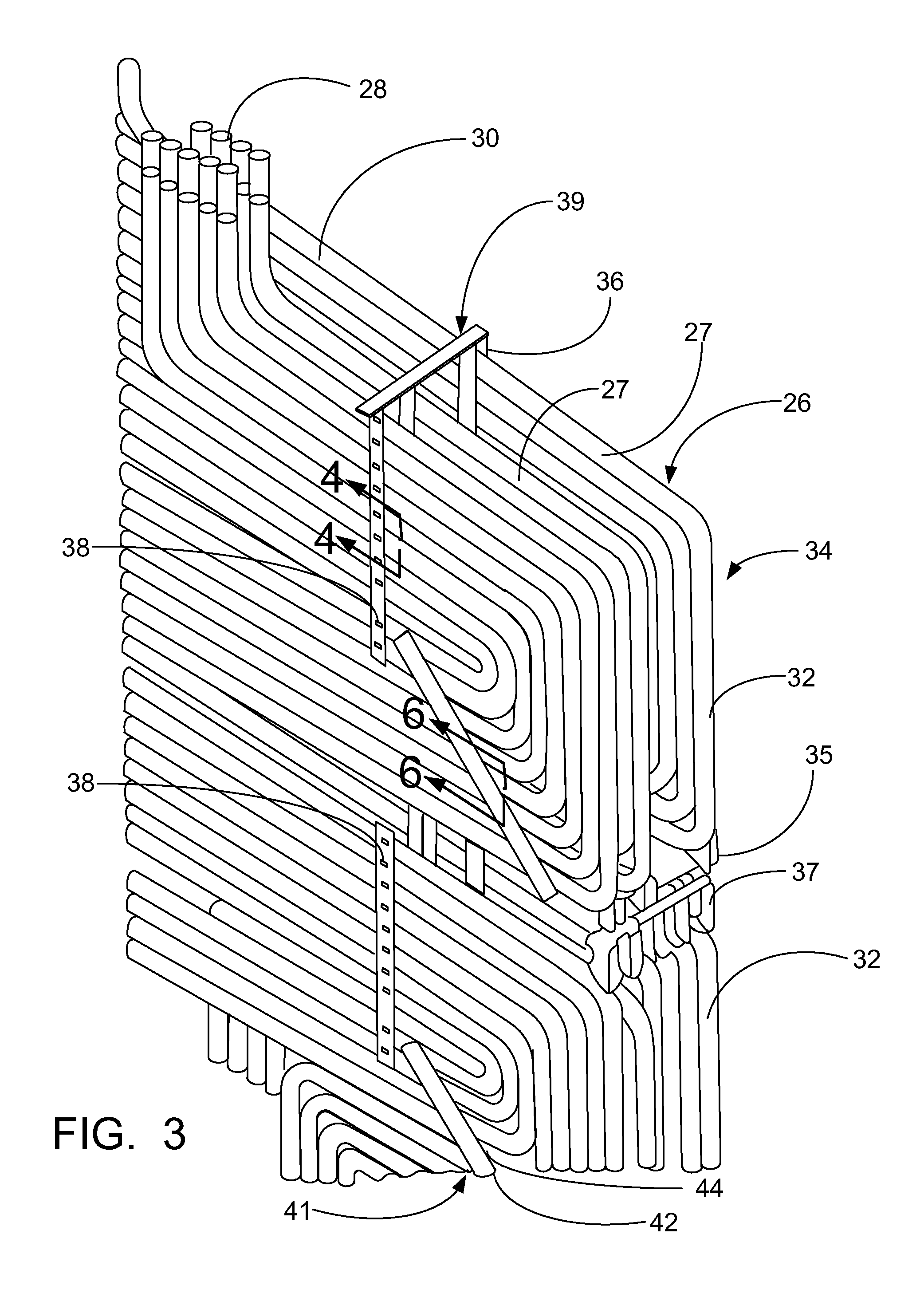Heat exchanger framework
a heat exchanger and tubular technology, applied in indirect heat exchangers, lighting and heating apparatus, nuclear elements, etc., can solve the problems of metal pitting corrosion, eventual tube failure, and down time of steam generators, so as to prevent the distortion and sagging of tubes, facilitate the drainage of water, and prevent the formation of water collecting
- Summary
- Abstract
- Description
- Claims
- Application Information
AI Technical Summary
Benefits of technology
Problems solved by technology
Method used
Image
Examples
Embodiment Construction
[0017]Reference will hereinafter be made to the accompanying drawings wherein like reference numerals throughout the various figures denote like elements.
[0018]Referring to FIG. 1, there is shown a steam generator 10 including water cooled tubular walls 12 that define a furnace chamber or combustion space 14 to which a fuel and air mixture is supplied by burners as schematically shown at 16. After combustion has been completed in the furnace chamber 14, the hot gases flow upwardly and around the furnace chamber nose portion 18, and across through the horizontal section 22 of the convection passageway 23, and thence downwardly through the vertical section 24 of the convection passageway 23 which is defined by walls 25 and includes a heat exchanger such as the primary superheater 26. Usually, the gases leaving the vertical section 24 of the convection passageway 23 flow through an air heater, not shown, and thence through a gas clean-up system, not shown, and are thereafter discharged...
PUM
 Login to View More
Login to View More Abstract
Description
Claims
Application Information
 Login to View More
Login to View More - R&D
- Intellectual Property
- Life Sciences
- Materials
- Tech Scout
- Unparalleled Data Quality
- Higher Quality Content
- 60% Fewer Hallucinations
Browse by: Latest US Patents, China's latest patents, Technical Efficacy Thesaurus, Application Domain, Technology Topic, Popular Technical Reports.
© 2025 PatSnap. All rights reserved.Legal|Privacy policy|Modern Slavery Act Transparency Statement|Sitemap|About US| Contact US: help@patsnap.com



